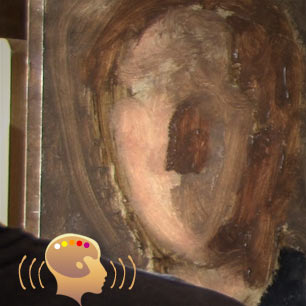<< back
LIST OF TUTORIALS:
1.A shading
1.B chicken scratch sketches
1.C three color painting
1.D finish the face
1.E basic memory drawing
2.A 3D shading: the sphere
2.B 3D shading: cube, cylinder, and cone
2.C contour drawing and memory
2.D blind contour drawing
2.E negative space
2.F sketching using basic shapes and volume
2.G vertical stroke sketch
2.H monochromatic color
2.I triad color
2.J analogous color
2.K complimentary color
2.L neutral color
2.M accented neutral color
2.N muted triad color
2.O mother color
3.A facial proportions, front
3.B facial proportions, profile
3.C the 3D face: volume and planes
3.D the eye
3.E the mouth
3.F the nose
3.G the ear
3.H shading warped planes in space
3.I copy a photograph
3.J composition and design: seven lines
3.K one point perspective
3.L two point perspective
3.M three point perspective
4.A atmospheric perspective
4.B fantasy landscape
4.C drawing the dummy
4.D repeated shapes
4.E elongated figures
4.F relative color
4.G mixing color
5.A cast drawing
5.B proportions and gesture of the figure, front
5.C proportions and gesture of the figure, profile
5.D the figure: basic shapes and volume
5.E drawing the torso
5.F preparing a painting surface
5.G basics of oil painting
5.H cast painting
5.I composition: focal points and emphasis
5.J composition: repeated color
5.K composition: eye movement
5.L still life painting
6.A plein air landscape
6.B drawing the arm
6.C drawing the leg
6.D drawing the hand
6.E drawing the foot
6.F five minute figure line drawings
6.G x-ray figures
6.H drawing the figure from life: gesture drawings
6.I drawing the figure from life: charcoal and lead
6.J drawing the figure from life: ink
6.K drawing the figure from life: toned paper and prismacolor
6.L drawing the figure from life: lead and watercolor
6.M drawing the figure from life: transfer drawing
6.N beginning a portrait with a drawing
6.O direct portrait painting
6.P translucency vs opacity in portrait painting
6.Q paint a self portrait
7.A composing the figure from imagination
7.B square, golden section, and rule of thirds
7.C composing with overlayed eye paths
7.D composing with value sketches
7.E using photography as reference
7.F painting an interior
7.G painting the figure from life: one hour study
7.H painting the figure from life: twenty hour study
7.I the color sketch
7.J blocking out an historical painting
7.K beginning an historical painting
7.L finishing an historical painting
8.A loosening up
8.B beginning an art career: production
8.C beginning an art career: promotion
8.D web design for artists
8.E business organization tips for artists
8.F pushing the boundaries

LESSON 2.O:
PAINTING A SELF PORTRAIT (Live Broadcast)
Video Length: Three Episodes, 30 Minutes Each
In this demonstration, we will paint a self portrait using a semi-direct painting approach. We will paint directly into glazes with each sitting, focusing on the use of triangles of color, temperature shifts, edges, contours, and lighting.
Materials you will need for this exercise include:
1. A panel to paint on, lightly sanded and coated with gesso
2. A mirror
3. Brush cleaner
4. Paper towel or rag
5. Palette loaded with paint. My colors are, from left to right: raw umber, transparent brown oxide, burnt sienna, raw sienna, Naples yellow, titanium white, cadmium yellow medium, cadmium orange, cadmium red deep, permanent madder deep (or alizarin crimson,) ultramarine blue deep, black. Or, you can do this exercise with a limited palette using only the colors burnt sienna, raw sienna, white, and black
6. A variety of brushes. A cheap chip brush, a few large bristle brushes, a few fine sable brushes, and a fan brush.
7. Painting medium. Preferably a glazing medium like a resin medium. The medium I use is a mixture of 1/3 Venice Turpentine, 1/3 distilled turpentine, 1/3 stand oil.
The price for a subscription to this video (which you may access as many times as you wish) is
$50.00
Subscribe to this video on:

